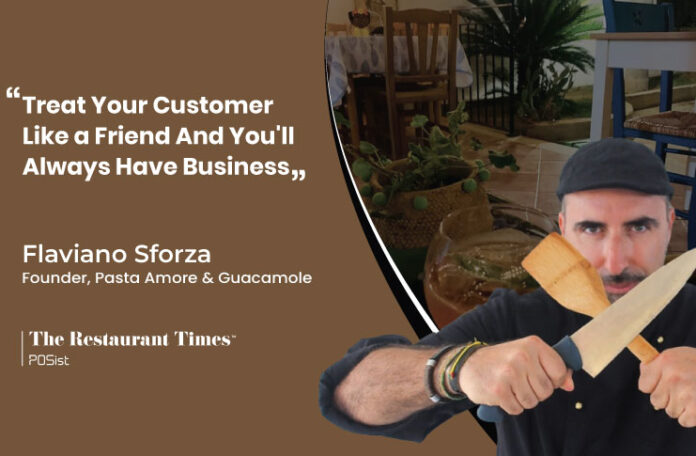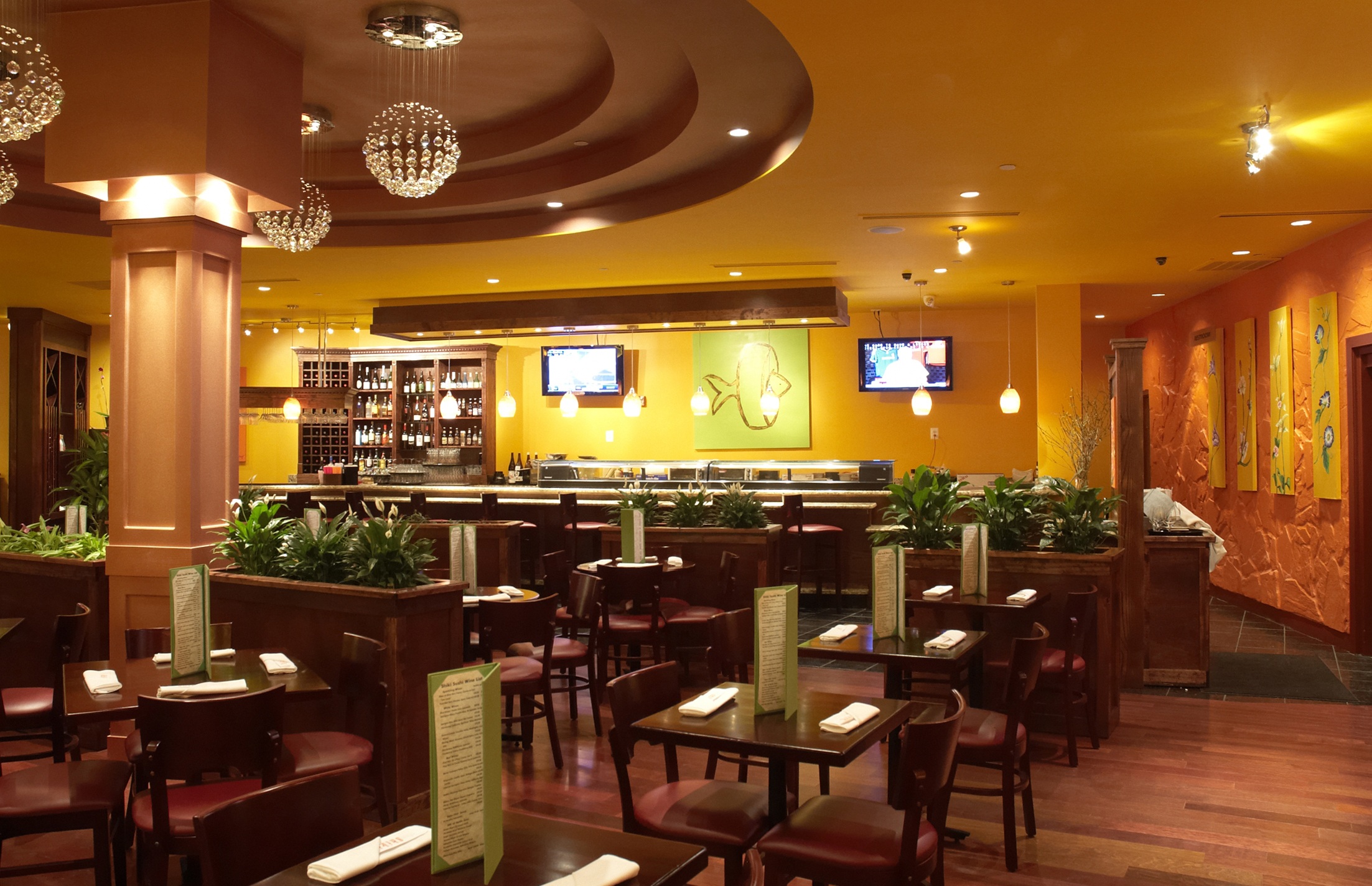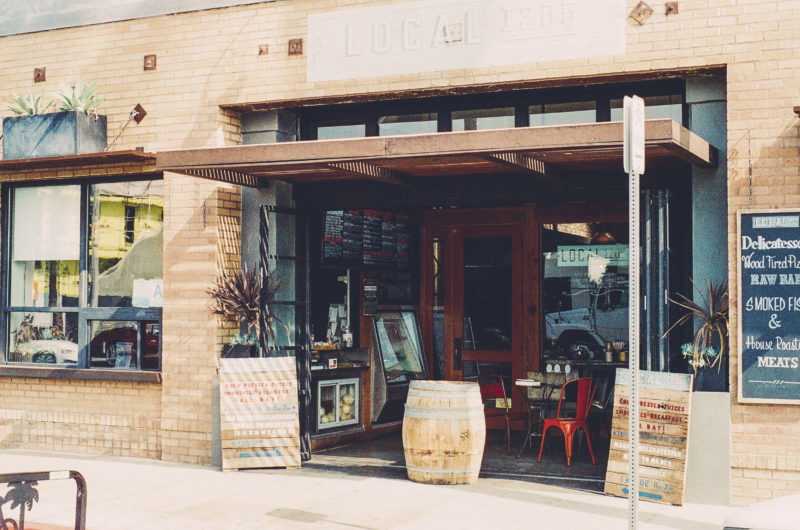Flaviano Sforza is a very famous chef and the co-founder of a very famous home restaurant in Italy – Paste, Amore and Guacamole, which is as unique and creative as its name. Having been exposed to the kitchen while he was still a child, Flaviano began his studies in psychology and sociology, in Italy and the UK. He worked as a sociologist but his passion for food was immense and led him onto the path of entrepreneurship. He opened his first Italian restaurant in Mexico in 2009, in which he worked as a chef. After three years, he moved back to Italy and opened another restaurant named Mexico Lindo that served a fusion of Mexican and Italian cuisine – he had been influenced by the Mexican flavours during his stay in the country.
In 2014, he was awarded for excellence Italiana, and TripAdvisor rated Mexico Lindo as the best restaurant out of 1050 restaurants. Today, he has changed his name from Mexico lender to pass the MRA and guacamole stressing a little bit more and Mediterranean influences. He has also been working as a personal chef for VIP families around the world. Flaviano says passion, love, creativity, and risk-taking are the main requirements of his job.
In Conversation With Flaviano Sforza, Founder, Pasta, Amore and Guacamole
In an exclusive conversation with The Restaurant Times, Flaviano Sforza, founder of Pasta, Amore and Guacamole, discusses the fusion between Italian and Mexican cuisine, the new challenges of the post COVID world and the future of home restaurants.
TRT – Please tell us more about the new aspects that you brought with the new brand?
There’s a famous Italian movie called “Pane, Amore & Fantasia” and my inspiration for this new brand comes exactly from the title. I changed the brand name to Pasta, Amore and Guacamole. This is the fusion between Mexican and Iranian cuisine. This is also a fusion between the plates and food, using special ingredients from Italy, because I’m based now in Italy, in Sicily. To be precise, I have this small restaurant, which has a unique menu of Mexican with some Italian fusion because I’m using ingredients from Italy for Mexican food. For example, I have dried chillies from Mexico and Italian cheese, which in itself is a fusion and I can combine the two ingredients onto the plates. So that’s why, the name is past the Amore and guacamole, even if it’s a little bit longer, but I like the melody.
TRT- From where did you get the idea of including fusions in your menu and, according to you, what are the most effective ways to create an attractive and effective menu for a restaurant?
I created this brand and I use a fusion between ingredients, and people seem to appreciate this because even if we do, for instance, Chinese or Japanese or even Mexican food abroad, sometimes it is difficult for people to accept everything about the exotic foods. For example, for you, Italian cuisine is exotic, while on the other hand, for us Indian or Mexican food is exotic. So, sometimes we can’t accept everything about Mexican or Indian or Japanese cuisine and we need to make it more acceptable. We need to find ingredients and some food that can combine the plates of the local people. I work to find what are the right plates, the right food for Italians because all the people here can’t accept all the Mexican food. Just like in India, the food is sometimes very spicy which here will not be possible to create or be accepted in the local community. That is why, I created not too spicy, not too strong food which brings a balance to Italian as well as Mexican food.
TRT – What is your take on creating a menu that is very much attractive to guests or whoever comes to your house?
The menu is unique and the primary ingredient is meat but when the guests request a vegetarian option, I do try to fetch some vegetarian food, same as when the request for gluten-free comes in, I try to bring a gluten-free dish. The main priority is that all the guests should be happy when they come to the restaurant. I think that handmade dishes are more important than commercially made ones because you have the love in them and in commercially made ones, you do not know if the chef was happily making them or not. In my dishes, I try to bring in all the natural ingredients and, that is why I think my dishes are more unique than others.
To make an attractive menu, you need to experiment with the local ingredients and present the local communities with that and then they will appreciate the efforts you have put in. For example, I use a lot of chillies and coriander, but in Mexican food, coriander is not appreciated, so I try to combine it with chillies and present it here to the local communities because here people like coriander. So at the end of the day, it is all about how you balance your ideas with what you have as an audience. The menu should be attractive and you should know how to make people happy. I try to make a balance between ingredients in order to make the menu attractive and, of course, something which is exotic yet simple for the local people.
TRT – What were the greatest challenges that were faced by you while rebranding and also when you shifted the entire setup from Mexico to here in Italy? Was it an easy move? What is your take on the same?
Every time you travel, you experience a different culture, even if you go back to your culture, in my case to Italy, it is not easy. It’s not easy because you need to reset your way of thinking, way of cooking, and way of life. So it’s always a challenge, not only for chefs but for everybody. In the case of chefs, as in my case, it is of course trying to put the taste of Mexican plates that are different from Italian plates. So people have different approaches to food, and wherever I go, I have to rebuild, invent, and adapt to the new culture. When I went back to Italy, it was a little bit difficult because I also needed to recall my customers, my friends that used to come with me. The biggest thing is that you need to keep in contact with your customers and your friends for branding purposes which is essential when you travel to different new places. The biggest challenge is to adapt to new cuisines and new people, and the biggest tip I can give is that you should always treat your customers right and as friends because they appreciate that more.
TRT – How do you ensure that the guest experience is always top-notch and the quality of service is consistent in your daily operations?
I believe that a restaurant should also be about sentiments, feelings, and experience and not only a place to just sit and eat. I treat my customers as my friends and they love it when I come out from the kitchen, have a talk with them and say, “Look, I cook this plate for you”, and they are amazed. This is how your restaurant becomes a temple of relationships and has social relations which are related to food but are also all-inclusive of human social experience with food. That is the secret to a successful restaurant, as long as you are interacting with your customers and making them feel as if they are home, you are good to go with your restaurant. I have noticed that in many restaurants the waiters do not know what they are serving and that is how many restaurants fail because they do not connect with the food they are making and serving. That is also a reason why I like the idea of a home restaurant because you can connect with your customers easily and welcome them in your home and give them the comfort of knowing that they are home and will be treated well.
TRT – 2021 has been a year of disruption for the F&B industry. How did the Pasta, Amore & Guacamole deal with the situation?
This pandemic has affected all the businesses and like others, my restaurant was also closed last year, but in the meantime, I was providing takeaways and delivery service. I adapted to the new ways of providing food to people and discovered that with restrictions there are always new forms of services that can be provided. These are tough times and we all have made new discoveries and invented ways to get food to customers. For example, cloud kitchens are doing great and are on the rise. So I think, even in a pandemic, people are appreciating the new ways and techniques that are coming up.
TRT- Tell us your experience of being a personal chef. How is it different from an executive chef?
The main difference is about the direction you take the restaurant towards. Being an executive chef, I feel you do not connect with the customers and you have to only work and work. While on the other hand, as a personal chef, you have to put love and emotions into your dish. I would like the customers to feel the warmth of the Mexican atmosphere, the ambience of the Mexican food or of the Mexican society and culture. Now I think the restaurant can be obsolete, and you need to offer something different, which is more than food. The big difference is the home restaurant, which can maybe give you just one kind of menu but can also give you the feeling of home, a feeling like you’re going out visiting a friend.

















